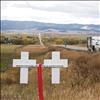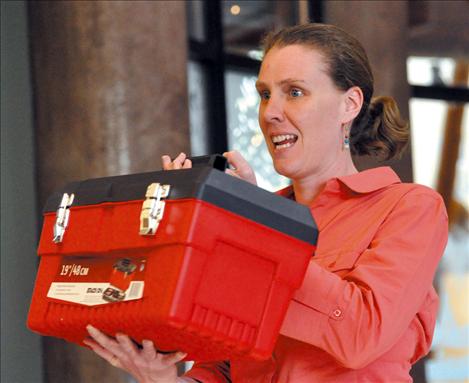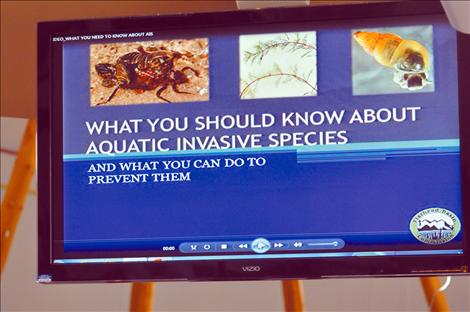Commission works to stop invasive species
Hey savvy news reader! Thanks for choosing local.
You are now reading
1 of 3 free articles.
PABLO — The Flathead Basin Commission is in the process of rolling out new tools meant to keep invasive species at bay.
At an April 9 meeting, commission members reviewed plans for new video public service announcements and the deployment of scent detection dogs trained to sniff out specific invasive species in British Columbia and the Flathead Basin.
The public service announcements will include an 11-minute film that will introduce viewers to invasive species that threaten the Flathead Basin, the potential financial and ecological impact of the invaders, and ways to combat their progression. The commission previously produced a PowerPoint that could be shown to groups across the basin area, but many people were uncomfortable presenting the visual aid without prerecorded narration, said Caryn Miske, executive director for the commission.
“We’re going to try to get the narrated version of the video out to places where essentially we have captive audiences … the vehicle registration station, airports, bus stations, anywhere we have captive audiences,” Miske said.
The video is expected to be available by May. It will be an addition to a speaker’s trunk of aids meant to illustrate how devastating invasive species can be to Montana lands and watersheds. The commission hopes the visual aids will stick in the minds of people that pass through western Montana, which contains four of the top five counties with the greatest number of invasive species in the state – Lake, Flathead, Ravalli, and Missoula. All four of the counties have more than 240 invasive species, according to the University of Georgia Center for Invasive Species and Ecosystem Health.
Despite the onslaught of invaders, some of the species that have caused the most damage in other major watershed in the United
States have not entered the Flathead Basin, and a major prevention campaign has been launched to keep it that way.
Last summer state-funded watercraft checkpoints, including one in Ronan, intercepted boats and performed inspections to prevent entry of any invasive species that might be caught on the exterior of the motors or trailers. Zebra mussels and quagga mussels have garnered the most fears.
The tiny mussels suck nutrients out of aquatic food chains and create reef-like build up along the lake floor and submerged structures.
The $52,000 cost of operating a preventative watercraft checkpoint is dwarfed by the projected cost of a zebra mussel infestation in the state of Montana. Governor Steve Bullock’s office has said an estimated $80 million price tag would likely accompany a zebra mussel infestation.
Despite the increased precautions, checkpoints in Idaho have detected several boats fouled by aquatic invasive species that made it all the way across the state of Montana, said Allison Begley, aquatic invasive species coordinator for Montana Fish Wildlife and Parks.
One additional tool planned to help fill the gaps is a pilot project that would deploy four scent detection dogs in British Columbia and the
Flathead Basin to detect aquatic invasive species. Grants and funds from Canadian municipalities are bearing the approximately $55,000 cost of the project, which would train four canines and two handlers to detect species of concern.
It may be too late in the season for the dogs to take to the basin this year, Miske said, but she hopes the dogs will be deployed by next year.

















